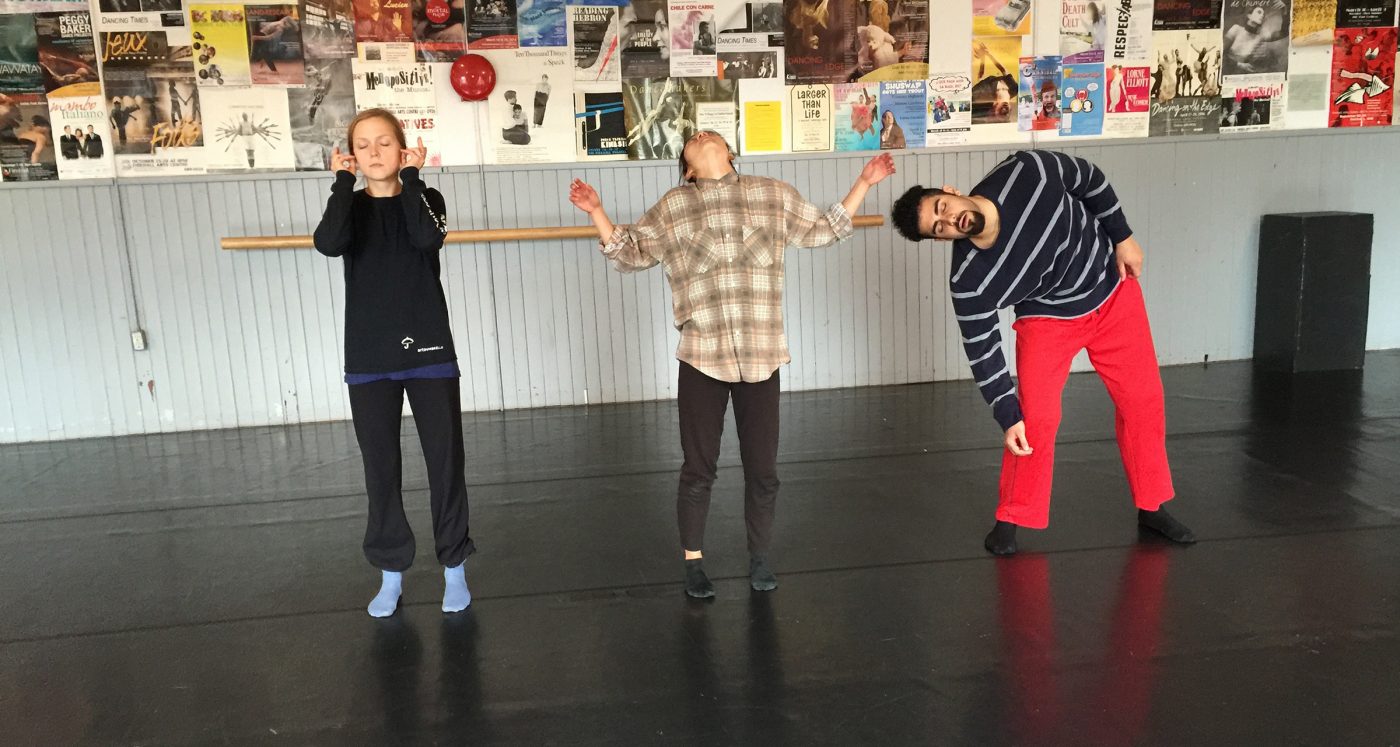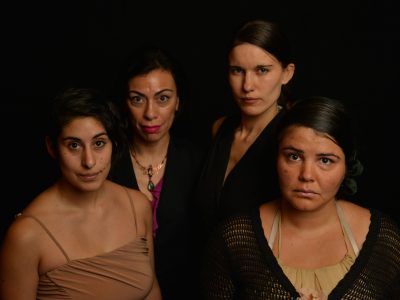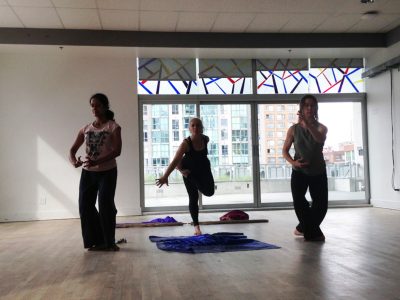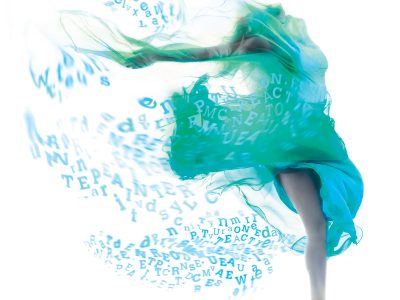- News
- Q & A with Nancy Lee and Paras Terezakis
Q & A with Nancy Lee and Paras Terezakis


Leading up to the the Chan Centre’s presentation of Words in Motion on March 18 + 19, part of the Beyond Words series in the Telus Studio Theatre, we spoke with each pair of artists (one writer and one choreographer) about their partnership and creative process.
Here are Nancy Lee (writer, The Age and Dead Girls) and Paras Terezakis discussing collaboration, fresh perpectives and taking chances.
NANCY
What do you hope audiences will take away from this work?
Nancy Lee: I hope audiences will be charmed by the feeling of not knowing what will happen next. I hope they’ll be moved by the openness and strength of the dancers and by the boldness of Paras’s vision for the piece. I hope they go away thinking as well as feeling.
What has been the most surprising or unexpected part of this collaboration for you?
NL: I was thrilled to be part of this project because dance is the furthest thing from what I do, which is sit alone in a room with my thoughts. Writing, while a sensory experience, is a purely cerebral one. To give these stories another life through movement seemed like a gift. The most surprising part of our collaboration is how well these two mediums, words and dance, seem to work together, and how Paras and I, in watching each other’s process, have found similarities in the two forms of expression.
What has been the most rewarding part of this collaboration for you?
NL: The most rewarding part of this collaboration has definitely been the privilege of witnessing a master in another discipline work. I love watching artists in process, and Paras’s process is so intuitive and inspiring. As he’s rehearsing, I can see him picking up on impulses, coming up with new idea after new idea. And the dancers themselves are amazing, their willingness to experiment, their ability to improvise. I feel as if I’ve been allowed passage into an entirely different and beautiful world.
How do you feel the original meaning or ideas behind your words have been altered, changed or enhanced by this new connection to movement?
NL: My hope, coming into this project, was that Paras would feel free to use my work as a jumping off point. I had no expectation that he would adhere to the original meaning of the text — in fact, I was excited to see how my work might be interpreted in a completely abstract way. What I didn’t anticipate was that Paras would see more deeply into my work and evoke through dance so many of the subtextual themes and ideas that I was playing with.

PARAS
Can you talk a little bit about the ideas and intention behind your piece?
Paras Terezakis: As I read Nancy’s short stories, there were several very strong images and layers of emotion embedded in the characters that prompted my imagination. I was not interested in an interpretive story-telling but rather wanted to capture the some vivid moods and colours she created in the dark urban landscape of Dead Girls. I involved both Nancy, the dancers and myself in exploring material through structured/directed improvisation.
What do you hope audiences take away from this work?
PT: When I read Dead Girls I was taken to another world: familiar, urban and intense. I hope when the audience sees my work they will be taken to yet another world – as colourful and vivid as Nancy’s – but quite different. I would also hope that it makes people want to read the book, or, if they have read it be reminded of the rich characters and situations in the book viewed from a quite different angle.
What has been the most surprising or unexpected part of this collaboration for you?
PT: Nancy’s openness and willingness to take chances. How she so willingly accepted and engaged herself in abstract elements of the work, without any expectation of a simple retelling her stories. She allowed me and the dancers the freedom to discover and explore some of the worlds she had created in Dead Girls.
Can you talk about how you approached the process of integrating the ideas, narrative and words themselves into your choreography?
PT: As it was a book of short stories, we captured glimpses of situations, struggles and moods and improvised movement relationships from them. We looked at common elements within the stories such as loss, longing, conflict and desire and used these action words to further develop the movement vocabulary. Select short sections of text will be used in the work as part of a sound scape in exploring the desperate relationships between the three characters on stage. The sections of text used bring the book closer to me on a personal level and guided my on my choreographic journey.



